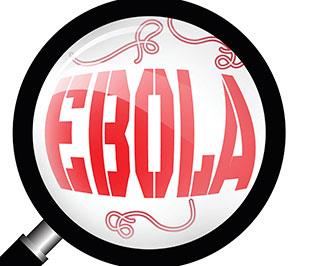 Image credit: Rattikankeawpun
Image credit: Rattikankeawpun
Two reports on the response to the Ebola outbreak in West Africa underscore the limitations of the United States and other countries in reacting quickly and effectively to such a crisis—and the game plan required to do a better job of containing the disease in the wake of the next outbreak.
In one analysis published in The Lancet journal, an independent panel convened by the Harvard Global Health Institute and the London School of Hygiene and Tropical Medicine offered a harsh critique of the global response to the 2013 epidemic that led to 11,000 deaths, recommending 10 major reforms to prevent future outbreaks.
The epidemic “exposed deep inadequacies in the national and international institutions responsible for protecting the public from the far-reaching human, social, economic, and political consequences of infectious disease outbreaks,” the authors noted. Not only was it costly, but also it revealed the inability of national health systems to respond effectively, inciting panic around the globe.
One of the report’s authors, Ashish K. Jha, MD, MPH, director of the Harvard Global Health Institute and a professor of medicine at Harvard Medical School, opined that the World Health Organization’s (WHO) delay in sounding the alarm about this epidemic signified a key error in this response effort.
“People at WHO were aware that there was an Ebola outbreak that was getting out of control by spring...and yet, it took until August to declare a public health emergency. The cost of the delay was enormous,” said Jha in a statement.
After a thorough review of the world’s response to the Ebola outbreak, the panel came up with a “roadmap” to beef up global efforts on preventing future outbreaks. To accomplish this, the panel in its first recommendation advised that the global community “must agree on a clear strategy to ensure that governments invest domestically in building such capacities and mobilise adequate external support to supplement efforts in poorer countries.”
For such a plan to work, it needs a transparent central system to track and monitor these resources, not to mention a commitment from all national governments to do regular assessments of their own capacity to handle an outbreak.
Several measures involve creating new entities at WHO, such as a dedicated center with strong technical capacity that would assume accountability for outbreak response, and a standing committee responsible for declaring public health emergencies.
In addition to strengthening governance and financial capacities at WHO, the panel recommended creating an independent United Nations (UN) commission to assess global responses to disease outbreaks, a global fund to foster research and development of medications, vaccines, diagnostics, and other supplies, and a global health committee of the UN’s Security Council, to raise political awareness of health issues.
Zeroing in on American soil, another study published in Infection Control & Hospital Epidemiology discussed the holes that still exist in the U.S. healthcare structure to respond capably to a future Ebola outbreak.
The 2014 epidemic in America involved three cases, including the death of one patient and the sickening of two healthcare workers. The Centers for Disease Control and Prevention (CDC) responded by creating a national network consisting of 55 sites to treat Ebola, including nine regional centers located in major metropolitan areas.
In surveying the capacities of these centers, researchers determined that overall, they have expanded the nation’s abilities to respond to an outbreak. Overall, the U.S. has the resources to respond in the event another crisis of this type arises.
Yet, limitations remain in a number of key areas. As an example, it’s unknown if the U.S. has adequate capacity to treat pediatric patients, given that no children with Ebola have ever been treated in this country. Another concern is staff capacity, since volunteers do much of the work at Ebola centers.
There’s also the cost and capacity issues associated with adequate waste disposal, as an Ebola epidemic generates a large amount of infectious byproducts.
“The costs associated with the installation of proper onsite waste disposal equipment, including incinerators, is approximately $100,000 and only 11 institutions reported having this capability; the remaining centers must transport the waste for disposal offsite and would have to spend millions of dollars to do so, while also increasing the risk of exposure of the pathogen to staff during the packaging and transportation process,” according to a statement from SHEA.
To further strengthen U.S. capacity for handling an outbreak, just about all of the CDC-created centers surveyed in SHEA’s study offered to participate in a national network for highly infectious disease.